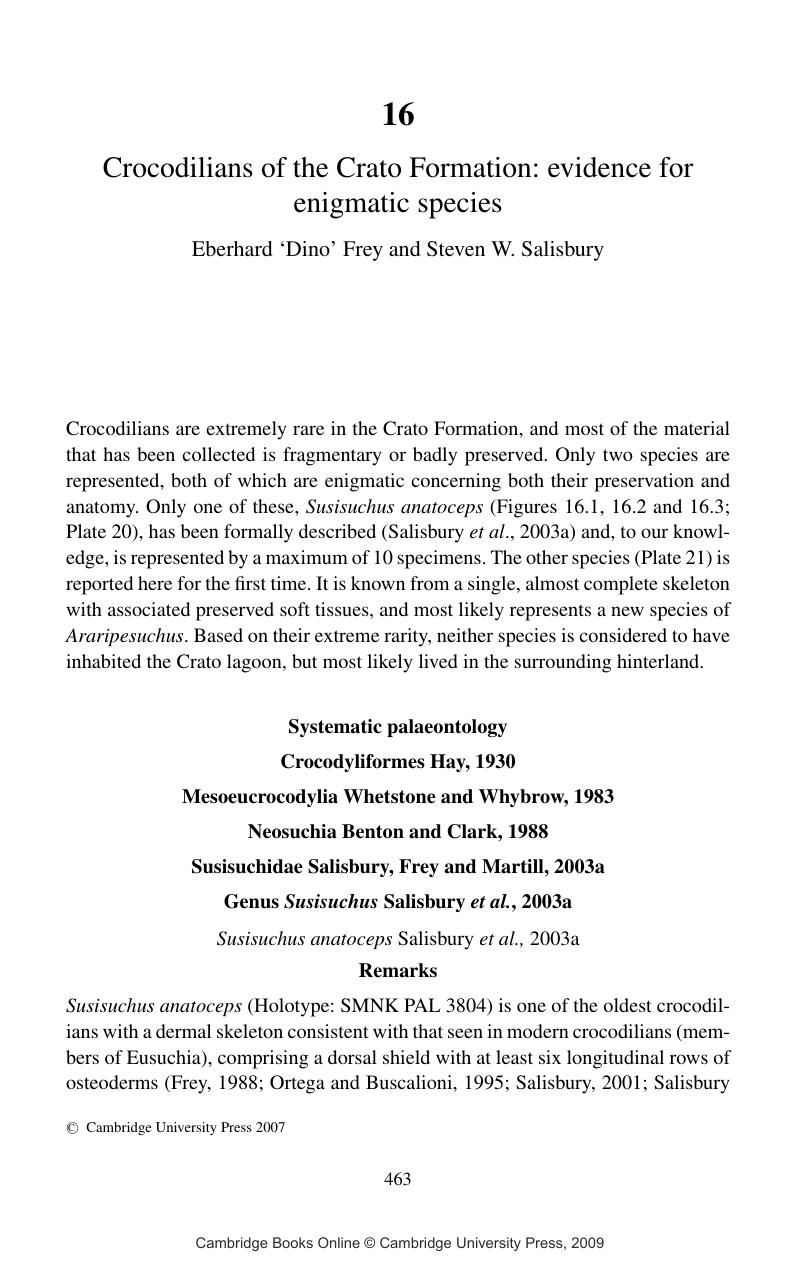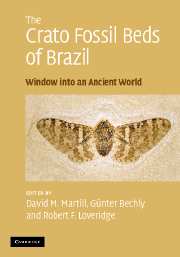Book contents
- Frontmatter
- Contents
- Contributors
- Preface
- Acknowledgements
- Part I The Crato Formation Konservat Lagerstätte
- Part II The invertebrate fauna
- Part III The vertebrate fauna
- 12 The Crato Formation fish fauna
- 13 Anurans of the Crato Formation
- 14 Turtles of the Crato Formation
- 15 Lizards of the Crato Formation
- 16 Crocodilians of the Crato Formation: evidence for enigmatic species
- 17 Pterosaurs of the Crato Formation
- 18 Birds of the Crato Formation
- Part IV The flora
- Part V Miscellanea
- Appendix: species list for the Crato Formation
- Systematic index
- Plate section
- References
16 - Crocodilians of the Crato Formation: evidence for enigmatic species
Published online by Cambridge University Press: 22 August 2009
- Frontmatter
- Contents
- Contributors
- Preface
- Acknowledgements
- Part I The Crato Formation Konservat Lagerstätte
- Part II The invertebrate fauna
- Part III The vertebrate fauna
- 12 The Crato Formation fish fauna
- 13 Anurans of the Crato Formation
- 14 Turtles of the Crato Formation
- 15 Lizards of the Crato Formation
- 16 Crocodilians of the Crato Formation: evidence for enigmatic species
- 17 Pterosaurs of the Crato Formation
- 18 Birds of the Crato Formation
- Part IV The flora
- Part V Miscellanea
- Appendix: species list for the Crato Formation
- Systematic index
- Plate section
- References
Summary

- Type
- Chapter
- Information
- The Crato Fossil Beds of BrazilWindow into an Ancient World, pp. 463 - 474Publisher: Cambridge University PressPrint publication year: 2007
References
- 3
- Cited by



